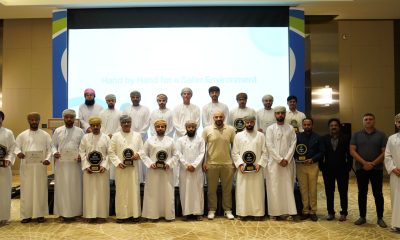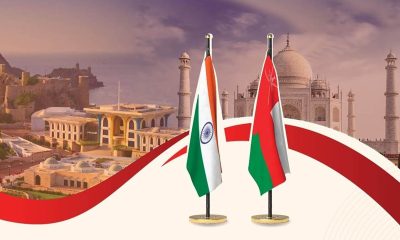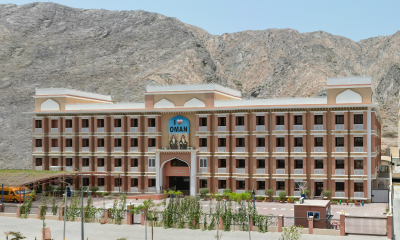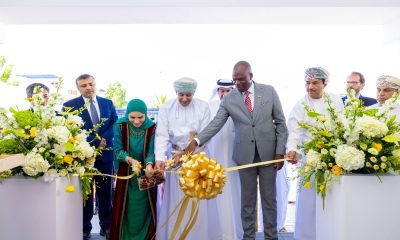Experts
Technology, Innovation and Collaboration Drive Produced Water Strategy

Without an effective water management strategy in place, operators potentially risk lower production rates, damaged wells, and drilling and completion programmes can stall or be compromised. Regulatory penalties also apply should damage to the environment occur. All of this results in a breach in stakeholder faith.
Collaborative Partnerships
Given that the produced water requirement must be addressed on a case by case basis, it is simply not possible for E&P companies to specify an optimum solution across their entire fleet. Most have hundreds if not thousands of installations, and every project is specific in respect of its produced water. Often, EPCs must submit a solution tender based on the Front End Engineering Design (FEED), meaning the solution will be specified according to a formula based on the volume of water, amount of oil, droplet size distribution, specific gravity of the oil and water, and the mandated overboard discharge or re-injection specification. It can also be the case that the types of technologies to be provided are already specified. Ideally, the E&P company should conduct a pilot study on the specific produced fluids to ensure the proposed solution will provide the desired or required results.
In these situations, and where a supplier has pilot units available and hooks them up to a slip stream of the produced water, they are able to demonstrate the performance that can be achieved with proprietary technology. Often, it is not uncommon for operators to keep that solution on-board until a permanent solution is built and delivered.
Ultimately, the tactical goal is to build an optimum solution for the application in question, but the strategic aim is to develop a process solutions roadmap meeting the operator’s long term goals. From primary and secondary treatment, to filtration and fabrication, the provision of an optimum water treatment solution calls for experienced design engineers, field operators and technical service chemists – not to mention state-of-the-art manufacturing facilities and a global delivery capability.
Operators in particular would benefit from a single solution supplier, one that has partnerships and links with other key suppliers of additional components such as UF, NF, RO and other membranes and oil field chemicals needed to provide the optimal overall solution considering capex, opex and lifecycle factors. Here, smaller providers tend to be more nimble and responsive, both in maintaining effective partnerships and building a competitive solution based on the best available conventional and proprietary technologies.
Aftersales service support aspects are also important. Support specialists must be available online and via telephone 24/7 should an issue arise, with the supplier being able to rapidly deploy plug-and-play stop-gap solutions whether the asset is onshore or offshore, and provide long-term solutions when required. Solutions must also be scalable, with the modularity to be expanded and refined to meet the demand of increasing flows and changing chemistries of produced water as wells and reservoirs mature.
Historically, it used to be the case that E&P companies would dedicate minimum time and resources to the treatment, handling, and disposal of produced water. But in today’s risk-averse and environmentally-aware operating environment, the fact is that produced water contains contaminants that require time, money and resources.
-

 Banking & Finance2 weeks ago
Banking & Finance2 weeks agoOman Oil Marketing Company Concludes Its Annual Health, Safety, Environment, and Quality Week, Reaffirming People and Safety as a Top Priority
-

 Economy2 months ago
Economy2 months agoMaal Card: What Oman’s New National Payment Card Means for Everyday Users
-

 News2 months ago
News2 months agoSheikh Suhail Bahwan, Chairman of Suhail Bahwan Group, Passes Away
-

 News1 month ago
News1 month agoOIG Appoints New CEO to Lead Its Next Chapter of Excellence
-

 Economy2 months ago
Economy2 months agoOman Unveils Official Omani Rial Symbol in Landmark Move to Boost Global Currency Presence
-

 News1 month ago
News1 month agoReport: How India & The Middle East Are Exploiting Immense Economic Synergies
-

 Uncategorized1 month ago
Uncategorized1 month agoOman’s ISWK Cambridge Learners Achieve ‘Top in the World’ and National Honours in June 2025 Cambridge Series
-

 Trade1 month ago
Trade1 month agoConsulate Office of the Republic of South Africa opens in Muscat, enhancing bilateral relations




























You must be logged in to post a comment Login